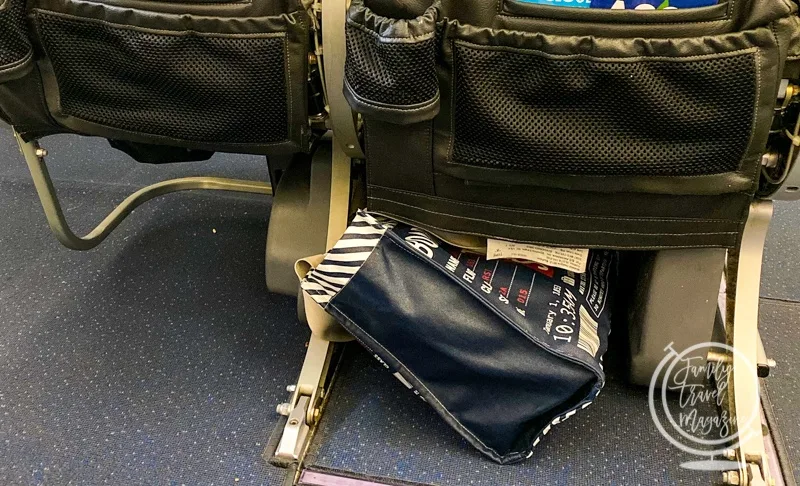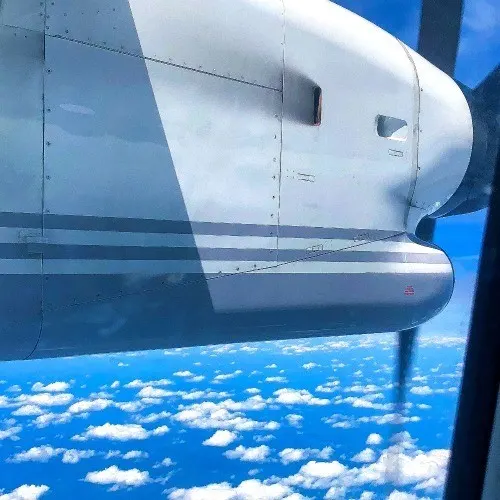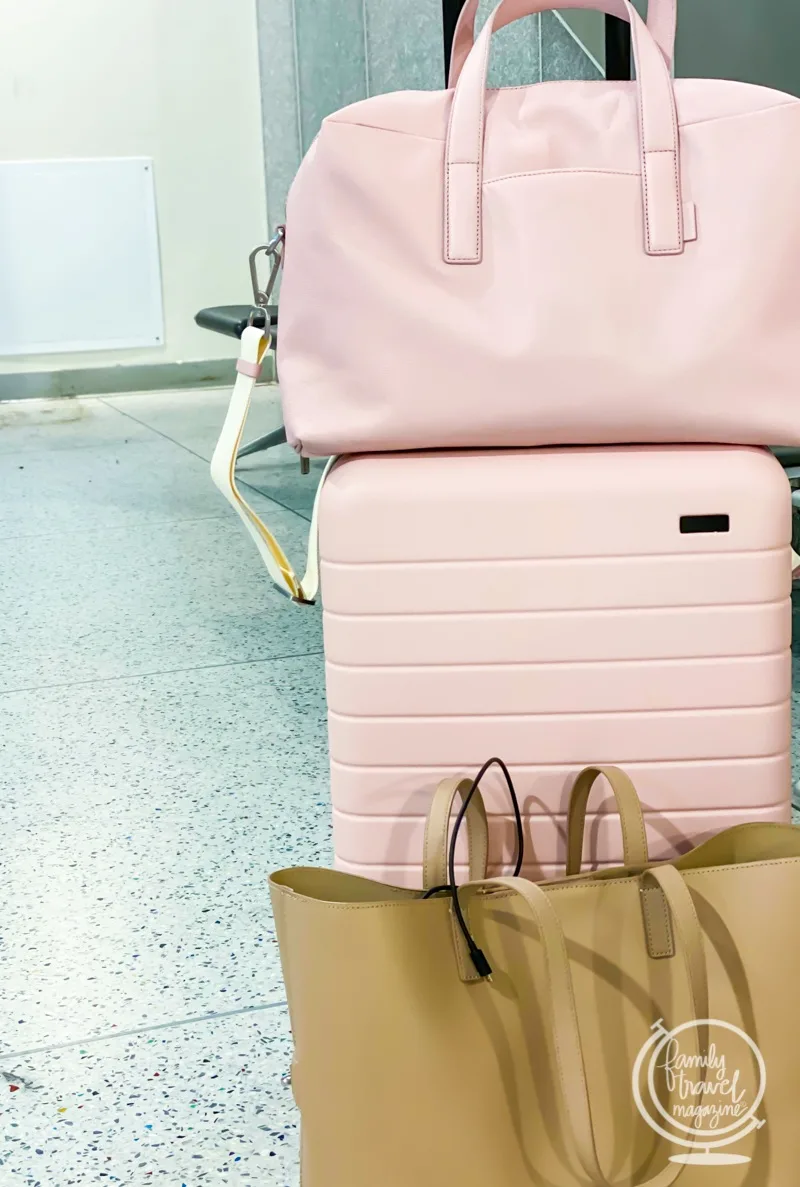Air travel can be stressful, especially once you are on the flight. With decreasing seat sizes and less and less legroom, even the most petite traveler can feel cramped and uncomfortable.
For overnight and/or long flights, it’s essential that you pack smart and bring airplane essentials so that you can be as comfortable as possible while flying. You’ll probably need a few things in flight, either for personal reasons or for entertainment.
Packing does take some advanced work. With limited space in the overhead bins, fees for checked luggage, and the possibility of lost luggage, packing for a flight is essential.
I recommend that you start with a packing list, and then check your airline’s website to see what the fees are for various bags. Once you know that, you can decide which type of bags to pack. Be sure to check size and weight restrictions as well as the fees.
Disclosure: This post contains affiliate links. A purchase/click through one of these links may result in a commission paid to us at no additional cost to you.

What To Pack for Airline Travel
According to the FAA regulations, you’ll be able to bring one carry-on bag that fits in the overhead bins, and one personal item that can be placed in the seat in front of you. Personal items can be things like handbags, computer bags, briefcases, small backpacks, and diaper bags.
The big factor when bringing a personal item is that it must fit in the seat in front of you. Some airlines may have different size restrictions.
In addition, your airline (especially budget airlines or discounted rates on other airlines) may charge for overhead space, or it may be unavailable by the time you board the plan. Therefore, it’s crucial that you pack anything essential in your personal item bag.
I have had a carry-on lost before. It was checked on the plane because there was no more overhead space, and it never made it onto the flight. Remember that lithium-ion batteries can’t be checked, so these should also be removed if you have to check the bag.
Because of the possibility of lost luggage on both domestic and international flights, I recommend using AirTags (if you use Apple devices). Our bags were lost three times in the past few years, and it was helpful to see that they were lost as we waited at baggage claim.
We put them on both our carry-on baggage (which may possibly be checked) and our checked baggage.
Carry On Bag
You should place heavier and bulkier items in the carry-on bag. Specific airline regulations limit the size of your carry-on bag.
International flights may have different rules for your carry-on bag, so looking up that information before packing is a good idea. Remember that you will have to lift it over your head and ensure that it fits in the overhead bin and that the bin can be closed.
Flying on a small, regional jet? Those smaller planes have much smaller overhead space, so sometimes you’ll have to check a larger carry-on item.
To make the most of your carry-on bag, consider these packing tips. Rolling your clothes can help them fit more in the bag and prevent wrinkles.
Packing cubes are also a great idea. You can roll your clothes right into the bag and then place it in your carry-on bag.
I like to put my shoes at the bottom of the bag and arrange them so they are as flat as possible. If your shoes are dirty (or could get dirty at your destination), you may want to put them in separate shoe bags (you can find these on Amazon, or can use things like shower caps or plastic bags).
If you aren’t checking a bag, you’ll need to pack your carry-on luggage with your toiletries. According to current Transportation Security Administration regulations (TSA regulations), you can only have one quart-sized bag of liquids, gels, and aerosols, and each container must be 3.4 ounces or less.
You’ll either have to purchase travel-sized items or put items from a larger container into a smaller one that meets the regulations. I really like Cadence capsules—while they are expensive, they don’t leak and are easy to fill.
If you pack a reusable water bottle, remember that it must be empty when you go through the security checkpoint. You can fill it up once you are past security.
While I generally recommend putting any essentials in your underseat bag, if you do decide to put any in your carry-on bag, they should be at the top. That way, you can remove them if your bag has to be checked at the last minute. You’ll also have access to them during the flight if they are before you.

Underseat Bag
You’ll store your personal item (or underseat bag) under the seat in front of you. If, however, you are seated in a row section where you have the bulkhead in front of you (and not a seat), the flight attendant will tell you that you’ll need to place this item in the overhead bins for take-off and landing.
I often find this inconvenient, although you’ll probably have more legroom in these seats. It’s a trade-off you’ll have to consider.
Your personal bag should contain your most important and valuable items, such as your wallet, boarding pass, medication (especially prescription medications), driver’s license, travel documents, and paperwork, as well as anything you’ll want to have for your flight.
This would include a book or eReader, a portable charger, a phone charger, lip balm, a computer, airplane snacks, a credit card, hand sanitizer, wipes to clean the tray table, armrests, and seat, a computer, toys (if traveling with young kids), etc.

Overnight/Long Flights
If you are packing for air travel, whether a red-eye flight or a long flight, you’ll probably want to include some flight essentials to ensure your comfort.
As I’ve gotten older, I’ve found that it’s extremely difficult to get comfortable in a coach-class seat for some long-haul flights or red-eye flights. So, it’s important to have the right items so you can at least get a little comfortable.
Here are some of my favorite red-eye travel essentials (available at Amazon):
Eye Mask (If you are sensitive to light and want near-complete darkness, a sleep mask can be helpful)
Pillow (I don’t like the U-shaped ones – regardless of what travel pillow you bring make sure you put it in your carry on bag and not directly on the germ-filled airport security belt)
Personal blanket – I love this wearable one because it has a pocket and won’t slide off of you.
Comfortable clothes – make sure you are as comfortable as possible. While passengers once dressed to impress, it’s now more important to be comfortable.
Change of clothes – You may want to change if you aren’t going right to your hotel room at your final destination. Even a change of underwear can be a good idea. Or, if your bags are lost, it’s good to have at least one set of clothes (more if you can fit them).
Reusable water bottle—You may want some water on your flight, especially on a long-haul flight. You can bring an empty water bottle through security and then fill it once you are past security.
Ear plugs or noise-canceling headphones – if you are sensitive to noise. My last two international flights had some very loud passengers and I was glad to have my noise-cancelling AirPods.
If you are taking a red eye, you’ll probably find that these items, in addition to the other essentials, really fill up your personal item. In that case, you can place them in a separate bag (tote or plastic bag) on top of your overhead bag.
Then, once you are ready to use them, you can pull them out of your bag without opening the entire suitcase. You won’t need many of these items at your destination, so you can tuck them away once you arrive to maximize space.
Hopefully, these tips will help you prepare for your next flight, especially any planned long trips. If we’ve left out anything you’d recommend, please leave us a comment.
